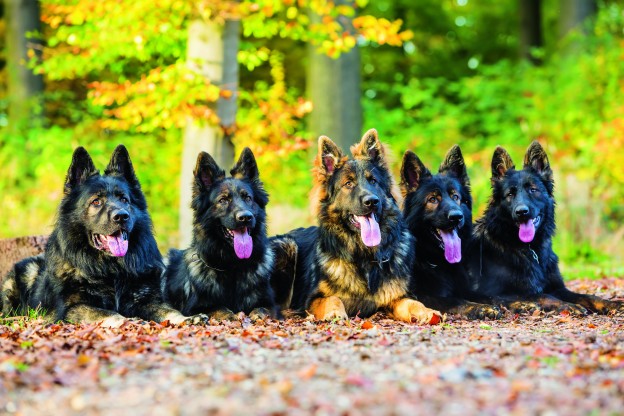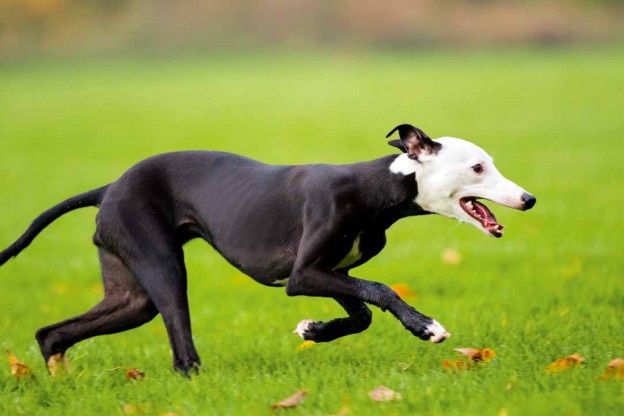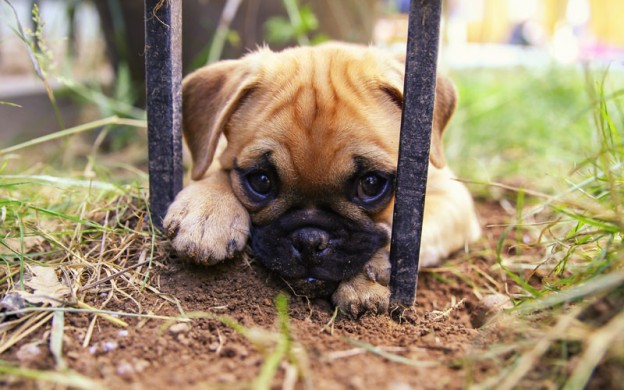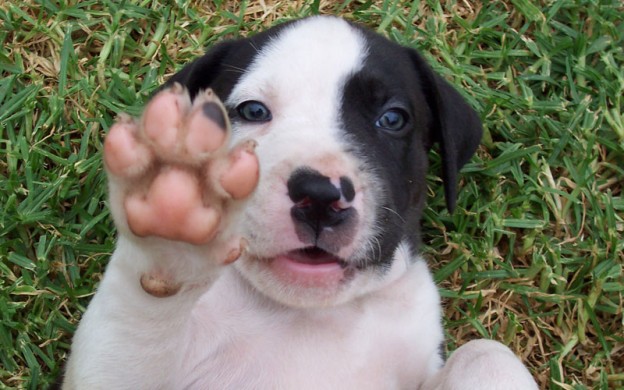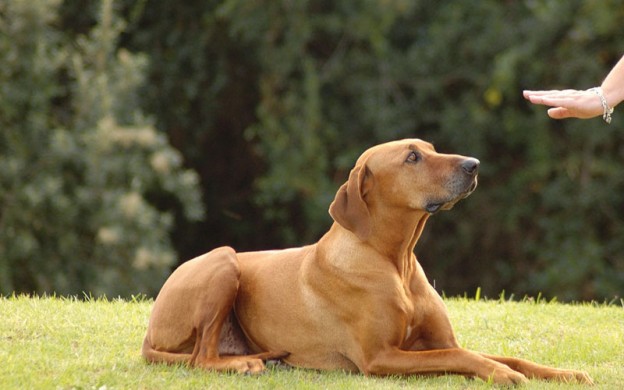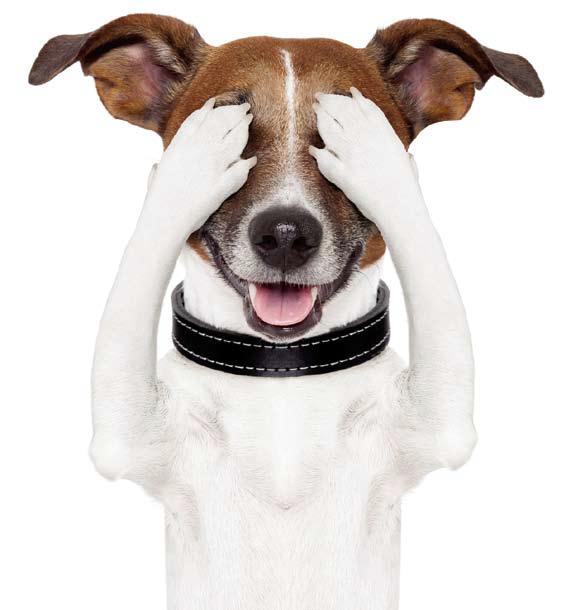
Is your dog a scaredy cat? From thunderstorms to vacuum cleaners and everything in between, Tim Falk investigates the most common doggy phobias and corresponding dog behaviour and how to combat them.
Whether it’s a fear of strangers or a hatred of thunderstorms, dogs of all shapes and sizes have things that can make them tremble with terror. Even the biggest and toughest Rottweiler can turn into a trembling mess when the vacuum cleaner comes out of the cupboard.
“Just like human phobias, your dog’s phobia, no matter how irrational, is real to them,” says Katarina Behan from dog training blog doglifetraining.com. “However, unlike us, they have no insight into the fact their phobia requires attention.”
To help your pooch overcome the fear factor, let’s investigate the most common doggy phobias.
Fear of thunderstorms
“Reasons behind thunderstorm phobia include thunder noise, static in the air, atmospheric pressure changes and weather associated with thunder such as heavy rain, hail and wind,” Behan says.
Fireworks, another common fear for our pooches, can also fit into this category.
“Thunderstorm phobia can be very difficult to treat because of the unpredictability of storms and our inability to replicate a storm for treatment purposes.”
Fear of the vacuum cleaner/lawn mower
Fear of the vacuum cleaner and lawn mower is usually due to poor socialisation or could develop as a learned response because of a bad experience. “These machines make quite a noise and, unless a dog is introduced carefully to these items, it can cause an initial startle which turns into a phobia over time. Exposing the dog to the vacuum or lawn mower when it is turned off and progressing to turning it on from a distance should get good results,” Behan says.
Fear of the vet
This is another common fear for dogs, and plenty of people who put off visiting their doctor will understand why. For your dog, a trip to the vet usually means being away from their owner, being surrounded by strange people and other stressed animals, perhaps being restrained or confined, and can involve uncomfortable or painful procedures.
“Frequent visits to the vet ‘just to say hello’ are a great way to help dogs who are scared of the vet,” Behan says. “These visits help your dog get to know the staff.”
Fear of stairs
For some dogs, moving up and down stairs can come to be a big problem. This phobia usually develops in dogs faced with stairs that have ‘see-through’ gaps in the rises. “It is believed that the stairs appear dangerous to the dog, who has a fear of falling through them or may have fallen previously,” Behan says.
She suggests using an old length of carpet to cover the gaps between the stairs, starting with only one gap showing and over weeks progressing to uncovering one gap at a time.
Fear of the car
Fear of riding in the car is a very common phobia, especially in puppies. It usually begins because puppies become carsick and then start to associate the car with feeling ill.
“Starting with frequent sessions in a stationary car and progressing to starting the car and short trips will help with this phobia,” Behan says. “Medication for motion sickness may also help some dogs. Teaching your dog to hop in and out of the car and even have their meals in the car will also help associate the car with good things.”
Fear of men
Behan says that fear of particular people is also common in dogs. “Some dogs are afraid of men with beards, people with umbrellas, people with walking sticks or who wear hats or sunglasses. Usually it is as a result of a lack of socialisation at an early age or a learned response after a traumatic event,” she says.
The best way to address this fear is to help your dog associate what they fear with something they enjoy. For example, if your dog loves food they can be fed in the presence of the feared person.
Fear of flies
Chanel, a seven-year-old Toy Poodle-cross, has a fear of flies. “At the first sound of a fly, she begins quivering and her eyes triple in size,” says Chanel’s owner, Kimberly Nissen. “If she hears a fly within the house, she will immediately run outside and ‘hide’ on her cushion. If she hears the fly outside she does the opposite and runs to her indoor cushion. If running somewhere isn’t an option, she bolts into my arms and tries to climb my body as high as possible.
“We try to comfort her until she realises the fly isn’t near her and then she usually goes back to playing.”
Multiple phobias
Annie Riches’ German Shepherd, Jill, is afraid of a number of things, including the lawn mower, the vacuum cleaner, loud-buzzing flies, the hair dryer and Annie’s brother.
“First, she will try and get away from the cause. She will hide in another room, often under desks or behind couches and beds. If she can’t find a clear escape route, she will freeze and cower where she is. In some cases she will wet herself, but only if the cause comes towards her and she can’t get away from it.
“We have tried giving her treats and reassuring her when the cause is present, ignoring her behaviour and attempting to make her sit and endure it, but none of these have worked.”
Treatment
In order to achieve the best outcome in treating phobias, Behan says it is best to take on multiple treatment methods. Treatment options include:
Desensitisation requires that your dog is slowly introduced to the thing it fears. “Desensitisation should cause only mild stress and has a good success rate over time and is a low-risk option for treatment,” Behan says.
Relearning creates a new, positive association with the feared object through giving the dog something they love, such as food, in the presence of the feared object.
Medication can be a fast-acting method of treatment that is very successful when used with desensitisation and relearning.
Flooding places a dog in to a situation it fears either until such time as the dog calms down. It must be used with extreme care and only by an animal behaviourist, as the likelihood of causing psychological harm is high.
Natural remedies are becoming increasingly popular nowadays with essential oils, organic food, acupuncture, massage and other anxiety products available.
A good dog trainer or animal behaviourist will be able to help you implement these treatments with proper care.
Bizarre dog behaviour
There are plenty of other things your dog may be afraid of, with Behan pointing to dog doors and even hot air balloons as common fears for dogs.



